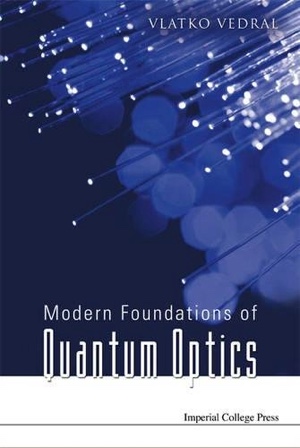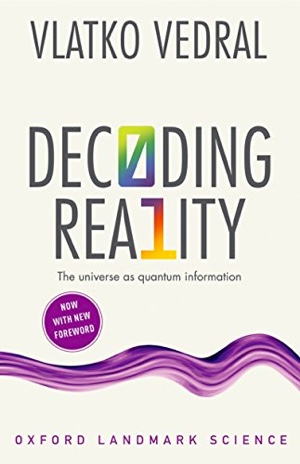Quantum Tunnelling and Energy Conservation Whodunit
I’m back in a less angry mode from the last blog and would like to tell you about a topic that I revisited with some of my friends and colleagues last week. We met in the beautiful Piedmont’s village of Cocconato for three days and – over some cheese and (a copious amount of) wine – debated a number of fundamental aspects of quantum physics. The main question here will be that of energy conservation in quantum physics (or, the conservation of anything, really, but energy is the best-known example).

Creator: NBC | Credit: NBC via Getty Images | Copyright: © NBC Universal, Inc.
However, to get to this I’d like to take a detour and come to the topic in a slightly more lateral-thinking fashion. A bit like the homicide detective Colombo…I want to start by exploring the idea that quantum physics is a very tight theory. “Tight” in the sense that if you change a small bit of the theory, this will immediately have drastic consequences for the rest. For instance, change the Schrödinger equation a tiny bit by adding a small non-linearity, and suddenly one can send information instantaneously, one can clone information, one can violate the Second Law of thermodynamics and so on.
Tightness is why different physicists have been able to say that different effects are the only mystery or the key feature or the main thing in quantum physics. Schrödinger said entanglement is it, Feynman said that it is the superposition principle, Levy-Leblond claimed it is the tunnelling effect, Bell said it was the quantum non-locality, Bohr the complementarity principle, Heisenberg blamed the Uncertainty principle and the list simply just goes on and on.
The reason why all these answers are right (!) is that we can start with any one of them as being the most fundamental one and derive the rest. Committing yourself to a single principle already commits you to all the other ones.
Let’s take quantum tunnelling. It’s a phenomenon that is impossible to explain classically because it involves a particle that seemingly does not have enough energy to overcome a potential (like a ball that’s not kicked hard enough to roll up a small hill to the top), however, quantumly, such a particle can still tunnel through the potential (like if that ball went through the hill to the other side, instead of rolling over it up and then coming down).
Tunnelling is behind more or less everything in quantum physics. It tells us how atoms bond into molecules (by electrons tunnelling between them), how charges attract or repel one another (by photons tunnelling between them), how electricity is conducted in a typical solid (by electrons tunnelling between different nuclei in the solid), how heavier atoms “spontaneously” become lighter (by an alpha particle tunnelling out of the heavier nucleus; the inverted commas are there as there is nothing spontaneous in quantum physics – a topic I discussed in some of my previous blogs) and the list just goes on and on…
So why did Feynman say that the notion of superposition is the only mystery? Because tunnelling is only possible due to superpositions and it also leads to superpositions. Ditto for entanglement or any other thing I said was considered fundamental.
An alpha particle trapped inside a Thallium nucleus is actually in a superposition of many different energies. Its time evolution is such that each of these energy states acquires its own phase, the result of which is that the state of the alpha particle changes to make it more and more likely for it to be outside of the Thallium nucleus (sometimes known as the amplitude amplification in the jargon of quantum computer scientists). At the end, the state of the alpha particle is such that all of its wavefunction lies outside of the nucleus. The remaining atom is now that of Gold! (the medieval alchemists would’ve loved to have known quantum physics).
Superpositions are therefore crucial in explaining tunnelling which is why classical physics cannot explain any of these phenomena. Also, an electron tunnelling from one nucleus to another, say when electricity is conducted, actually creates a superposition of the electron being at both nuclei at the same time. This is how tunnelling and superpositions are intimately connected.
All other connections can be explained in a similar manner and you just have to trust me that this is so. And that’s just about it from me.
Ah,…just one last thing (as Colombo would say).
I didn’t tell you about the energy conservation which was the whole point of this exposition. Joking aside, my blog does resemble the logic of every Colombo episode. We know the killer in advance – it’s the principle of energy conservation and it’s definitely done it. But like Colombo, we have to explain how this perpetrator manages to operate within quantum physics. Yes, despite all the weirdness of quantum physics, energy conservation actually holds in a very strict manner.
How can that be? Say you take a photon and send it though a beamsplitter (yes – you’ve guessed it – this is a form of quantum tunnelling too!). Then there is half a chance for it to come either way, so the energy of the photon is the same before and after the beamsplitter. However, imagine now that someone looks at the output of the beamsplitter. If you apply unitary quantum mechanics to the whole process, this person becomes entangled to the state of the photon (just like in the Schrödinger cat thought experiment).
So, there is an observer in one branch seeing the whole photon come out one way, and this state is superposed with the branch where there is another observer that sees the whole photon come out into the other port of the beamsplitter. Each observer in their own branch can vouch that they see a whole photon (and nothing but the whole photon), so it sounds that the beamsplitter and the observation have created two photons out of the one input photon.
And this is seemingly problematic for energy conservation as the energy looks like to have doubled by the photon being superposed after the beamsplitter. Oh, someone would say, but surely energy is conserved on average as each branch has a probability ½. Yes, however, we have already said that, to an observer in each branch, the photon looks just as real and wholesome. And neither of the observers is even aware of the existence of the other branch. This brings me to the main point of this blog.
The energy in quantum physics, if you assume that everything is quantum including apparatuses and observers and all, is actually not just conserved on average, but is conserved in each branch of the state. It is exactly deterministically conserved, in other words, not just statistically.
This intuitively makes sense if you think about each branch in the superposition as a classical world (which they are, for all practical purposes, in this case). Then, as we know, in the classical world the energy is always conserved (not just on average, which is itself a meaningless idea in the fully deterministic classical physics). So, this must be true quantumly if we are to reproduce classicality in some limit!
Finally, we can turn this idea round (this is the final twist in our physics whodunit). Suppose that you think that half of the universe is quantum and the other half classical (some adherents to a collapse theory or the Copenhagen interpretation may believe this). Then energy would not be exactly conserved in such a universe. In other words, insisting on the exact energy conservation forces us to acknowledge that everything in the universe must be quantum. I did tell you quantum physics was a tight theory…it’s not for the inbetweeners.
Sign up to my substack
BOOKS
ASK ME ANYTHING!
If you'd like to ask me a question or discuss my research then please get in touch.





